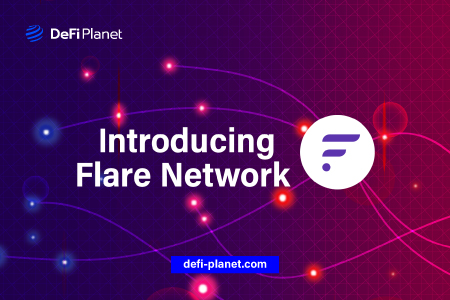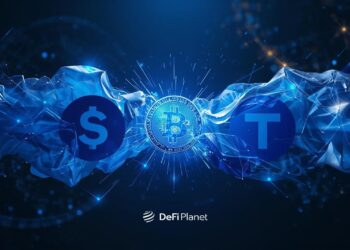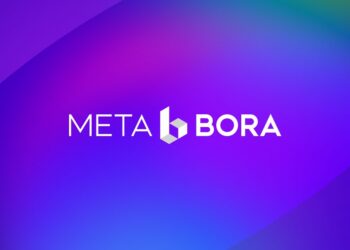Introduction
Many public blockchain networks have evolved into multipurpose platforms, simultaneously accommodating multiple use cases. Ethereum, for instance, gained widespread adoption by enabling the creation of decentralized applications (dApps) in addition to its primary function as a medium for exchanging value.
Despite the advantages of this versatility, the resultant congestion due to a mix of millions of relevant and irrelevant activities on-chain has ultimately compromised the overall user experience on the Ethereum network.
Different solutions have been proposed and implemented to tackle the scalability problem existent on major blockchain networks. One approach involves tailoring blockchain networks to specific activities, such as NFT development and trading or derivatives trading.
This approach has been tested and considered to facilitate easier network upgrades and allow the pursuit of more specific goals. Flare Network, the subject of this review, is a notable project that has successfully implemented this approach and consequently risen to prominence in the industry.
In June 2021, Flare Network secured $11.3 million in an investment round led by Kenetic Capital. According to the project’s developers, the funding was to be used to advance the development of a blockchain network dedicated to precise data verification.
This article provides a comprehensive overview of the Flare Network, highlighting its use cases and how it guarantees precise on-chain data to assist developers in building resilient, decentralized applications (dApps).
An Overview of the Flare Network
Flare is a Layer 1 blockchain network focusing on improving the quality of on-chain data and providing a better developer experience.
Flare offers a solid foundation for powering various dApps, primarily focusing on maintaining high data integrity for blockchain developers. This emphasis on data integrity improves overall usability and empowers developers to create more effective utility and monetization models within the network.
Founded in 2019, Flare Network’s co-founders include Hugo Phillion, Sean Rowan, and Dr. Nairi Usher. The project is headquartered in Dubai, United Arab Emirates. The project secured its first round of funding from Xpring that same year.
Flare published its first whitepaper in August 2020, outlining the team’s objectives and introducing Spark, the project’s native token. The project aimed to introduce smart contract functionality to networks like the XRP Ledger.
However, in December 2022, Flare released a new whitepaper, renaming Spark to FLARE (FLR) and adopting a PoS consensus mechanism particularly focused on blockchain data integrity.
The Flare network launched its genesis mainnet on July 14, 2022, initially operating within a privately monitored network.
Flare became publicly available in September 2022 and launched its token distribution on January 9, 2023. During the initial launch, Ripple (XRP) token holders received a 15% airdrop of the FLR token supply.
Exploring the Ecosystem: How Does Flare Work?
Flare is an EVM-based network that seamlessly integrates with Ethereum’s Solidity programming language. This compatibility enables developers familiar with Ethereum to easily deploy their smart contracts on the Flare network, providing them flexibility and convenience.
A group of validators operating under the Proof-of-Stake (PoS) consensus mechanism ensures the network’s security. These validators are required to stake FLARE tokens as a form of collateral. Validators are chosen to add new blocks to the network through a random selection process, although validators with a higher stake of tokens are more likely to be selected.
Flare distinguishes itself as “the blockchain for data” and prioritizes data security and verification. It accomplishes this by decentralizing data access, which prevents a single point of failure and promotes accurate and reliable data transmission to the network from various independent sources.
Two essential protocols contribute to decentralized access and data integrity on the Flare network. The first is the Flare Time Series Oracle (FTSO), a blockchain oracle that provides reliable data to the network. The second is the State Connector, which securely integrates data from other blockchain networks. Together, these protocols ensure the integrity of data on the Flare network.
By incorporating the FTSO and State Connector, Flare enhances interoperability with multiple blockchain networks. This integration allows developers to create decentralized applications (dApps) that can serve multiple chains through a single smart contract deployment.
Now that we have covered the fundamental elements of the Flare network, let’s explore its various components in more detail.
Flare Time Series Oracle (FTSO)
The Flare Time Series Oracle (FTSO) is a decentralized blockchain oracle that provides off-chain data to blockchain networks. While blockchain networks typically have access to on-chain data, blockchain oracles bridge the gap by supplying relevant off-chain data to ensure the network functions as intended.

Flare network’s FTSO decentralized nature, however, improves the accuracy of data submitted on-chain. Currently, the FTSO consists of up to 100 independent data providers who supply real-time off-chain data to the Flare network.
These data providers operate independently of the Flare network and are incentivized based on the accuracy of the data they submit. They earn rewards in FLARE tokens for contributing valuable off-chain data to the network.
Unlike other public blockchain oracles that focus mainly on financial data like cryptocurrency prices or stock market activities, the FTSO aims to provide access to real-world event data. This versatility makes it applicable for uses beyond the scope of financial markets, such as insurance claims and settlements.
For instance, the FTSO can accurately report the exact number of minutes of added time in a football match. The oracle leverages data sourced from independent providers who are motivated to provide accurate information, resulting in highly precise data inputs.
The FTSO undergoes updates every 3 minutes, meaning the data submitted to the oracle is reviewed and refreshed every 3 minutes. Once this period elapses, the data becomes obsolete and is no longer utilized.
To participate in submitting off-chain data to the FTSO, data providers are required to stake a specific amount of FLARE tokens. FLARE token holders can also delegate their tokens to data providers and earn rewards.
Token holders can choose which data provider to delegate their tokens to, and their choice is often based on the provider’s on-chain record on the network. Data providers with a reputation for consistently submitting accurate data are more likely to attract a greater amount of FLARE tokens delegated to them.
Data providers receive compensation in FLARE tokens based on the amount of tokens delegated to them for accurate data submissions. The distribution of rewards is determined by each person’s share of the total delegated tokens to their respective data provider.
State Connector
The Flare network’s State Connector supports interoperability with other public blockchain networks. Generally, the State Connector provides an immutable state of data specifically sourced from various public blockchain networks.
The state connector’s utility becomes evident when bridging assets between public blockchain networks. This protocol allows both the destination chain and the initiating chain access to the state of their respective networks. This access enables them to verify the validity of transactions and determine if they are suitable for execution.

Independent attestation providers must reach a consensus to ensure data integrity on the Flare network. In cases where a consensus cannot be reached regarding the accuracy of a transaction, its execution fails.
Attestation providers are rewarded with FLARE tokens for their efforts in maintaining the data on the State Connector.
The State Connector works in conjunction with the Flare Time Series Oracle (FTSO) to create a comprehensive two-way data verification system. These components are vital in upholding the reliability and integrity of the data within the Flare network.
Songbird
Songbird serves as the test network for the Flare network, allowing developers to test their projects in a simulated real-life environment before mainnet launch.
Unlike other test networks with unlimited token supplies, Songbird operates with a finite token supply, resembling a mainnet network.
The Songbird token (SGB) is the native token of the Songbird testnet, with a market cap of over $6,000,000 at the time of writing.

The unique value of the Songbird network lies in its realistic token model, enabling developers to assess the economic implications of their projects and decentralized applications (dApps) intended for deployment on the mainnet.
Songbird’s accurate replication of the mainnet Flare network, allows developers to effectively test and refine their projects in an environment that closely resembles the live network, thus ensuring a seamless transition to the live network.
Looking ahead, the Flare network aims to introduce a bi-camera legislature governance model, allowing participants on the Songbird network to actively participate in the decision-making process.
This inclusive governance framework would empower Songbird users to contribute and play a significant role in shaping the future of the Flare network.
The FLARE Token
FLARE (FLR) is the native token of the Flare network. Similar to other Layer 1 networks, it serves as a means for payment for gas within the Flare ecosystem.
Developers that build projects on the network, and end-users who use decentralized applications (dApps) on Flare rely on the FLARE token for these transactions.
The security and block creation process of the Flare network is facilitated by validators, who are required to stake a portion of their FLARE tokens to ensure network integrity. Validators are rewarded with additional FLARE tokens for their efforts in securing the network.
In addition to its payment and security features, the FLARE token possesses governance functionality. Token holders can participate in voting on decisions concerning the Flare network. Additionally, delegating FLARE tokens to data providers supplying relevant data to the FTSO can generate extra incentives, without losing custody of the FLARE token.
FLARE Airdrop and Distribution
On January 9, 2023, the FLARE (FLR) token was distributed through a token distribution event (TDE) to wallets holding the Ripple (XRP) token. This strategic step by the Flare team aimed to quickly decentralize ownership of the FLR token.
Major centralized exchanges such as Coinbase and Binance played a pivotal role in facilitating the distribution of the FLR token airdrop to users who held XRP tokens on their platforms.
The distribution was determined by the proportion of XRP holdings, with a rate of 1.0073 FLR per 1 XRP. This distribution was based on a snapshot taken on December 12, 2022.
The total supply of FLR currently stands at 100,000,000 with only 16% of this in circulation. It’s worth noting that the FLR is inflationary, with additional tokens planned for introduction into the ecosystem in the future, indicating that there is no maximum supply.
At the initial launch of FLR tokens, entities involved in Flare product development and investment held 22.5% of the tokens, the community received an allocation of 58.3%, and the Flare team, advisors, and early backers were allocated 19.2%.

The Flare network intends to continue distributing more tokens, particularly to those holding the WFLR token, a wrapped version of FLR exchangeable on a 1:1 ratio and used for delegation purposes.
The distribution plan involves the gradual release of 700 million FLR tokens per month over a period of 36 months, until January 2024. This approach ensures broad participation and engagement within the Flare community
As of the time of writing, FLR has a market cap of over $380,000,000. However, it has experienced a decline of 54% from its January 2023 all-time high.
The Flare Foundation
The Flare Foundation is a non-profit entity based in the Netherlands. Its mission is to support the growth and operations of the Flare network. It engages in activities such as grants, investments, partnerships, research and development, engineering, marketing, and community and developer relations, but does not participate in governance.
The Flare Foundation, however, was allocated 9.7% of the FLR tokens generated at the Genesis mainnet, of which 85% were held in escrow and gradually distributed to the foundation over a 36-month period. This distribution aligns the foundation’s token ownership with the emission rate, maintaining a consistent ownership ratio relative to the community over time.
Features Of The Flare Network
Flare’s data-centric nature and user-friendly qualities make it stand out among its peers. However, these attributes are not the only things that distinguish the network; it also boasts other inherent features that set it apart from the pack. Let’s delve into them.
Flexibility
The Flare network stands out for its flexibility, apparent in its development approach and token utility. Unlike many other Layer 1 networks that exist in silos, with closed rules, unique programming languages, and blockchain setups, Flare follows a simpler and more user-friendly path.
Flare seamlessly integrates with the Ethereum network and is written in Solidity, the same programming language as Ethereum. This compatibility allows developers building on Ethereum to easily transition to the Flare network, often without even realizing they are on a different network, thanks to Flare’s compatibility with Ethereum smart contracts.
The network also offers multifaceted functionality. Its native token, FLR can be used for governance, allowing token holders to participate in decision-making. Additionally, FLR can be delegated to data providers and used in DeFi, similar to other DeFi tokens.
Security
Security is a top priority for the Flare network, and this emphasis is evident in its robust approach to maintaining accurate data. The network employs two significant protocols, namely FTSO (Flare Time Series Oracle) and State Connector, which are specifically designed to ensure the submission of correct data to the Flare network. By verifying the accuracy of the data, these protocols offer developers a convenient environment to build decentralized applications (dApps) on the Flare network. Developers can rely on real-time data and have confidence that unexpected or unreliable events will not occur, improving the overall security and reliability of the network. Consequently, this improves the experience for end-users.
Interoperability
The Flare network prioritizes interoperability, allowing seamless interaction with other blockchains. Its State Connector and FTSO protocols ensure accurate data exchange and validation. Developers benefit from the compatibility with Ethereum’s programming language, simplifying dApp development. This interoperable approach promotes collaboration, expands asset access, and improves the network’s usability and security.
Web 2 Compatibility
The Flare network is compatible with Web 2 applications and opens up possibilities for developing dApps that offer practical uses beyond activities confined to the blockchain. This establishes Flare as an attractive network for developers starting to explore opportunities beyond building applications solely for on-chain purposes.
Limitations of the Flare Network
In addition to the common challenges faced by public blockchain networks, the Flare Network has its own set of inherent limitations that require attention. One prominent issue is its limited network activity.
Despite being Ethereum Virtual Machine (EVM) compatible, the Flare Network has not gained significant popularity among developers and users. Unlike some other well-established public blockchain networks, it is not commonly chosen as the primary platform for dApp (decentralized application) development.
This lack of traction poses a problem for developers who risk building a dApp that may struggle to attract attention and users.The limited adoption is also reflected in the price of its native network token, FLR, which has experienced a 67% decrease from its initial launch price.
To address these limitations, the Flare Network may need to pursue further developments and strategies to enhance its appeal to developers and users alike.
Future Outlook of The Flare Network
The future outlook for the Flare network depends on several factors. While the network faces competition from various existing blockchain systems, its growth largely hinges on gaining adoption in the broader blockchain space.
Currently, Flare has seen limited adoption, primarily in NFT projects with little traction. This has hindered widespread stress testing and evaluation of its effectiveness compared to popular public blockchain networks like Ethereum.
However, Flare is actively pursuing partnerships to drive its ecosystem forward. Its focus on data integrity and the ability to connect off-chain data sources to the on-chain world present opportunities for wider application beyond blockchain use.
As blockchain technology expands into everyday use, Flare’s unique approach and interoperability with other networks and non-blockchain applications could position it as a preferred choice.
Considering the Flare network is relatively new, it will undergo iterations and developments similar to established public blockchain networks. Its ability to address the data validity problem on-chain and its potential for interoperability provide solid reasons for potential growth, provided that adoption increases.
The future success of the Flare network will rely on attracting developers, users, and establishing itself as a trusted and valuable player in the evolving blockchain landscape.
TL:DR
- The Flare network is a distinctive Layer 1 blockchain network that prioritizes data integrity. Its approach to decentralized data verification sets it apart within the blockchain space. Furthermore, its extensive interoperability makes it compatible with both on-chain and web2 applications, providing versatility for developers.
- However, the Flare network encounters challenges in terms of adoption due to stiff competition from more established public blockchain networks. As a result, developer activity on the network has been low, and the number of use cases limited.
- Nevertheless, the Flare network is actively pursuing strategic partnerships to expand its reach and attract a wider audience. These collaborations hold promise for the network’s future development and growth.
- Given its innovative nature and potential to shape the representation of blockchain data, the Flare network presents an intriguing opportunity. As it continues to evolve and gain traction through partnerships, it remains a public blockchain network that deserves close monitoring. The journey ahead for the Flare network holds the potential for transformative advancements in data integrity and broader blockchain adoption.
Disclaimer: This article is intended solely for informational purposes and should not be considered trading or investment advice. Nothing herein should be construed as financial, legal, or tax advice. Trading or investing in cryptocurrencies carries a considerable risk of financial loss. Always conduct due diligence.
If you would like to read more articles like this, visit DeFi Planet and follow us on Twitter, LinkedIn, Facebook, Instagram, and CoinMarketCap Community.
“Take control of your crypto portfolio with MARKETS PRO, DeFi Planet’s suite of analytics tools.”





















